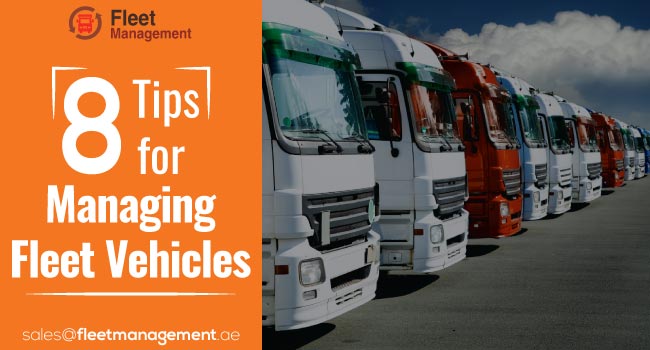Any strategy to reduce the fuel costs of a fleet of buses/cars/ trucks is welcome. There are different methods used by managers of large fleets to control fuel costs of the vehicles.
We have attempted to list down some of the most useful tips that you can keep in mind to reduce the fuel costs of large fleets.
How to Cut Down on Fuel Spend
Many managers witnessed a large fall in fuel costs when drivers were trained appropriately and their mentalities changed over time.
1: Improve Driver Behaviour
This, according to fleet managers, is the smartest thing to do. How the drivers are taught to act on the road impacts total fuel costs incurred by a company.
Read Also: 31 Ways to Reduce Fleet Maintenance Costs
This is of greater importance to those organizations that own large fleets of vehicles.
Driving behaviour such as accelerating too fast, speeding the vehicle frequently, time spent on idling the engine, etc., can increase fuel costs. The best way to find out if your fleet drivers are doing all of these is to install telematics.
This provides the data. When data is available, regular training and relevant guidance are provided to the drivers. The drivers can be trained without the telematics data as well.
It is a good idea to invest in driver safety training. This helps them to identify their driving weaknesses and help them get better in those areas.
2: Use seasonal driving techniques
It will prove useful to employ seasonal driving techniques as the different times in the year demand: cold weather techniques during the fall and winter and warm weather techniques during spring and summer.

Cold weather driving techniques
- Just warm up the vehicle by idling for about 30s and drive off gently. Engines warm up easily when the vehicle is being driven. Try to keep idling to a minimum just to warm up the vehicle.
- Seat warmers and defrosters should be used only to a minimum to save fuel.
- The vehicle’s oil should be suited to cold weather.
Warm weather driving techniques
- Keep the air conditioner use to a minimum.
- Keep the windows of the vehicle open when driving. This keeps the insides cool and renders the vehicle more fuel-efficient.
- When driving on the highway at higher speeds keep the windows closed and switch on the air conditioner if necessary.
3: Route planning helps
Planning better routes gets your drivers to go where they want quickly. They would spend less time driving and idling the vehicles and this means a sure saving of fuel. It is a good idea to plan vehicle routes by investing in GPS trackers and using relevant traffic apps that may be available.
4: Check the tires regularly
Tires have a huge impact on the consumption of fuel. When the summer approaches, ensure that you change the tires by removing the ones that plied during the winter. The extra grip that tires use in the winter means they are using up more gas.
It is important to check the tire pressure from time to time. Tires that have less inflation than what is required makes the drivers accelerate more than necessary. This means the usage of more gas. Mileage is greatly reduced in such cases.
5: Save money whenever possible
Fuel prices are always rising and we do not have a control on that. However, it is always possible to choose the right type of fuel for the vehicle. If you choose the lowest grade of the fuel for a specific vehicle every single time, then it means lower prices. It is also worthwhile to find gas suppliers that charge you the least.
Read Also: What Are The Benefits of Fleet Management Software?
Quick Tips
6: Fleet managers should work out the possibility of keeping costs down by using smaller vehicles with higher mpg.
7: using vehicles with four-cylinder engines may help to reduce fuel costs.
8: Adding hybrid vehicles to urban fleets may help to cut down costs.
9: Personal use charges can be increased to recoup fuel spends.
10: It is also a good idea to eliminate personal use. This will surely result in a reduction of fuel spends.
11: Monitoring unauthorized use of company vehicles when they are not plying for the company trips (such as when the driver is on a vacation) helps to cut on fuel expenses.
12: Fleet vehicle drivers have to be trained to switch off the engine if the vehicle engine has to idle for more than 30 seconds. This takes up more gas than when starting the engine.
13: When more than one driver takes the vehicle along the same route, it is vital to see that they take only one vehicle along that route. The others can be rerouted or assigned different jobs.
14: From time to time it is vital to remove all the low-mpg vehicles and optimize the fleet vehicle performance. This will keep the fuel spends at a low level.
15: Vehicle assignments can be reworked so that they are closer to the repair network. This will cut down to and fro fuel consumption.

16: Never overload fleet trucks to more than their capacity.
17: Modifying the tire and track specifications can help to save on fleet fuel expenses.
18: Modifying the truck gears so that the engines run at less RPM for a given speed means that less fuel would be consumed.
19: Wind drag can be reduced by making the vehicle as aerodynamic as possible. Keep the windows rolled up most of the times when on the highway.
20: It is a good idea to remove all extraneous devices from the outside of the vehicles. This serves to reduce fuel consumption.
21: it is worthwhile to change the drivers’ habits. Some ways in which fleet managers can do this are as follows:
- Send email newsletters to communicate suggestions
- Sending out DVDs showing fuel economy tips to the drivers
Only constant reminders would help to change the drivers’ attitudes and habits.
22: Drivers should strive to be energy conscious and practice energy conservation habits regularly while driving.
23: Drivers can use training modules, even online ones, to learn fuel conservation techniques for their vehicles.
24: Remove all unnecessary items from the vehicles before a trip.
25: It is always important that drivers adhere to the set speed limits. Driving the vehicle faster tends to use up much more gasoline leading to quicker gas depletion.
Read Also: 8 Tips for Managing Fleet Vehicles
A few small actions can lead to mighty savings on fuel spends. This is especially true for a fleet of vehicles.














